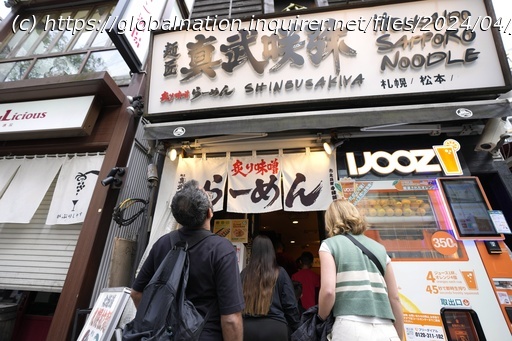Array
Spicy, steaming, slurpy ramen might be everyone’s favorite Japanese food.
In Tokyo, long lines circle around blocks, and waiting an hour for your ramen is normal. What awaits might be just a dive, but a hot bowl of ramen rarely fails to hit the spot.
Often cooked right before your eyes behind dingy counters, the noodle dish starts here at around 1,000 yen ($6.50), and comes in various flavors and local versions. There’s salty, soy-based “shoyu” or “miso” paste. Perhaps it’s red-hot spicy with a dash of chili. Sometimes there’s no soup at all but a sauce to dip the noodles in.
The curly noodles are lighter than the darker buckwheat “soba,” or “udon,” which are also usually flatter or thicker.
Ramen has also surged in popularity in the U.S., South Korea and other countries. Retail sales in the United States have risen 72% since 2000, according to NielsenIQ, a sales tracker. In the 52 weeks ending April 13, Americans bought more than $1.6 billion worth of ramen.
In restaurants, versions beyond the traditional soup are appearing, said Technomic, a research and consulting company for the restaurant industry. Del Taco, a Mexican chain, recently introduced Shredded Beef Birria Ramen, for example.
Packaged ramen that’s easily cooked in hot water at home is called instant noodles; it’s precooked and then dried. The story of how Momofuku Ando invented instant ramen in a backyard shed in 1958, when food was still scarce, is the stuff of legend in Japan. He went on to found the food giant Nissin Foods.
Although convenient, instant noodles aren’t the same as the ramen served at restaurants.
Some Japanese frequent ramen shops twice or three times a week. They emerge, dripping with sweat, smacking their lips.
“I’m probably a talking bowl of ramen,” says Frank Striegl as he leads a dozen American tourists through the back alleys of Tokyo’s funky Shibuya district on what he calls “the ultimate ramen experience.”
The crowd is led behind a shabby doorway, sometimes down narrow stairs, to a dim-lit table where ramen gets served in tiny bowls, practically the size of a latte cup, or about a quarter of a regular ramen bowl.






